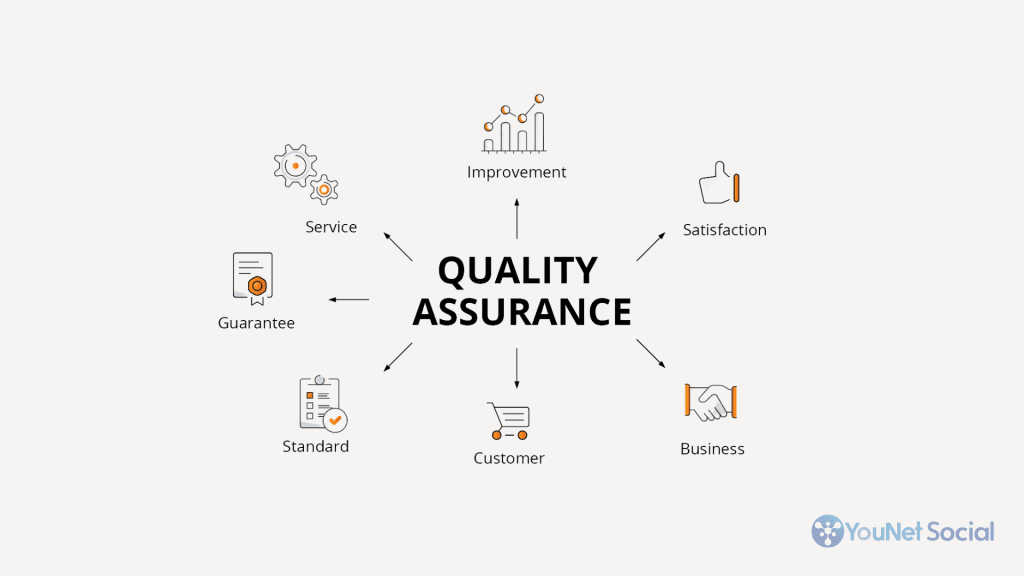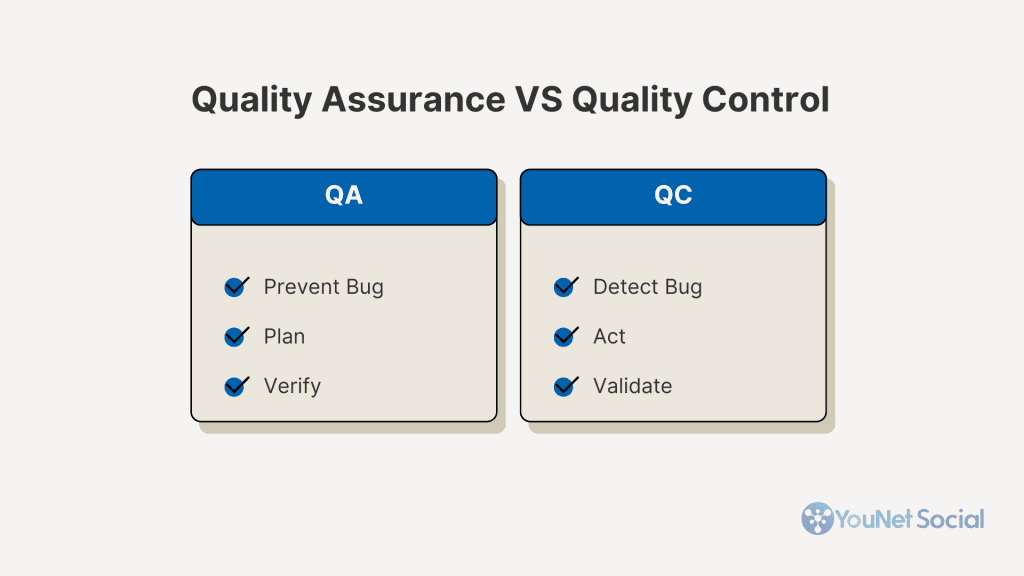

Curious about the significance of quality assurance in software development? Think back to those moments when software glitches threatened to erase hours of your hard work with a single click of a button. Sound familiar? Your customers might have experienced similar frustrations, prompting them to switch to a competitor’s tool faster than you can say “save.” Similarly, if your app lags or crashes under pressure, it could drive users away and compromise their data security.
So, how can you ensure your digital product performs flawlessly in every scenario?
Enter quality assurance (QA).
In essence, software quality assurance is a meticulous process designed to define and uphold standards for reliable, secure, and stable software. It ensures that the final product aligns with these standards, safeguarding user experience and data integrity.
In this post, we’ll dive into the critical role of quality assurance in software development, explore its benefits, dissect various testing methodologies, and empower you to assess the effectiveness of your QA strategies.
The role of QA and testing in software development


Prioritizing quality not only ensures defect-free results but also fosters a culture of excellence within a business. In software development, quality assurance (QA) entails implementing robust testing routines to anticipate potential issues and avoid having to find quick fixes later.
Making quality a priority ensures that everyone in a business focuses on getting things right the first time. In software development, quality assurance (QA) involves putting in place effective checks to catch potential problems early on and avoid having to find quick fixes later.
Smart companies understand how crucial quality assurance is at every step of creating software. They encourage everyone involved in the process to think of their work as something they’re making for a specific audience. For example, business analysts give important information to project managers, designers, and developers. Designers create designs for developers to turn into working code, and so on.
Mistakes can happen at any stage, so everyone needs to stick to high standards of quality.
If you don’t pay enough attention to QA, you could end up with software bugs that cost a lot of money to fix and you might loose your customers.
Quality Assurance Versus Quality Control


The terms “quality assurance” and “quality control” are often used interchangeably when we speak about the processes used to maintain the quality of a product. In fact, there is a difference.
Quality assurance (QA) is all about making sure that digital products meet high standards throughout the software development lifecycle. What happens after a product has already been developed is called quality control (QC), a set of activities aimed to ensure the product meets the customer’s criteria. One of the key parts of QC is testing, which is planning and executing tests to meet the goal of QC. But why do we bother with testing if we already have QA?
Testing is about finding and fixing mistakes in a product and comparing the results with what we expected. Here’s the main difference between QC and QA:
- QA helps us spot and stop potential problems before they appear, while testing is all about spotting problems and fixing them.
- QA focuses on making sure the final product matches what the customer wants, while QC testing focuses more on checking different parts of the product to find any problems.
- QA involves a lot of management tasks like setting rules, training people, and picking tools, while testing is more about creating tests to find bugs.
In short, QA is about preventing problems, while testing is about finding and fixing them. Both are crucial for making sure our products are top-notch.
The Importance of Quality Assurance in Software Development


Quality assurance is hugely important when it comes to software development. Some of the most important features are:
- Reduce cost and save time
Having QA systems in place during your production life-cycle allows you to anticipate and prevent issues such as bugs, defects, and errors from ever occurring. In addition, if any bugs or errors do occur despite the QA processes implemented, they would likely be relatively minor and easy to fix. A bug found early can cost nothing to fix. But the same bug hidden within billions of code lines at a later stage requires time to be identified and can delay delivery. Moreover, if not found, a bug may cause tremendous harm after release, from a malfunction to system failure. In that case, you will have to call your product back for more thorough testing and rework, which means more expenses and reputation losses.
- Enhance Security
Security is always a huge priority when it comes to software, so it makes sense that a company’s QA processes should have a strong focus in this area. Software programs may work perfectly well, but this doesn’t guarantee that they are secure. Any weaknesses or defects in a software’s security could seriously compromise a company/client’s data, which is evidently a massive problem. The QA team installs safeguarding processes when the product is being developed to make sure that it is built as securely as possible before finally being tested by the QC team after product completion.
- UX improvement
If the software is challenging to use, tends to crash, is unclear about the next step of the user journey, or there are just too many buttons, the customer will be unlikely to do business with you again. One of the benefits of quality assurance is minimizing the risk of having those issues.
For example, user-based testing determines how users interact with real concepts and identifies friction before they are built. And functional testing enhances back-end functions and detects problems with the front-end interface before the product goes into production.
- Simpler features adding
The older the code and the more interconnected its parts, the harder it is to add new functionality without breaking anything. Testing in software engineering helps developers know about the crucial parts of the code and boosts their confidence. A new development team will know where to look if something goes wrong after building another feature and will appreciate your understanding of the importance of quality assurance.
Conclusion
Software quality assurance encourages your team to spot and fix mistakes before they impact your customers’ satisfaction. The goal is to ensure that your software works smoothly and meets your users’ expectations without any glitches.
Investing in a dedicated QA team may seem like a big commitment, but it pays off in the long run. However, for shorter projects, you can always consider outsourcing your QA needs to a reliable web development partner.
At YNS, we understand the critical role that quality assurance plays in delivering high-quality software solutions. Our dedicated team of QA professionals is committed to helping you achieve your business goals by ensuring that your projects meet the highest standards of performance, reliability, and security. Contact us today to learn more about how our QA services can drive success for your projects.




